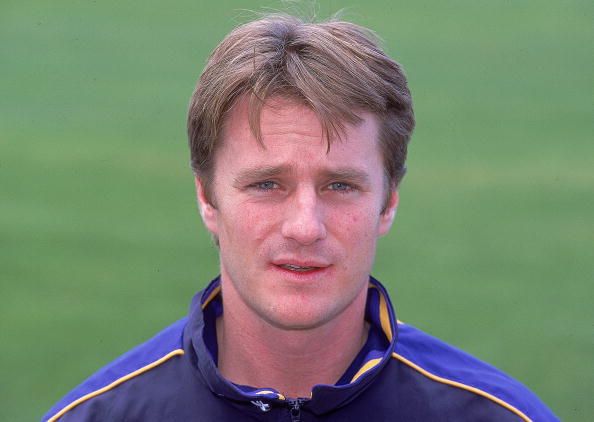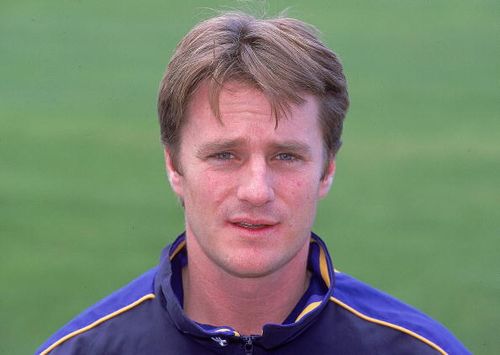
John Gloster interview: "The reward for the physio is the same as that for the players - good performances from the team"

The name John Gloster may not ring a bell, but this physiotherapist from Australia had a big role to play in India’s emergence as an intimidating cricket power in the past decade. Gloster was appointed the physiotherapist to the Indian team in February 2005, and he successfully rendered his professional services for four years, before resigning from the post in 2008. But even after giving up that job he decided to stay on in India; Gloster is now the full-time physiotherapist for the IPL franchise Rajasthan Royals. In an exclusive interview with Taruka Srivastav, Gloster spoke about his experiences as a physiotherapist, and the physical problems plaguing Indian athletes today.
Q. Are you currently the physiotherapist for any player or team other than the Rajasthan Royals?
Gloster: I am officially only with the RR team and am not assigned to any other team; I even have an ongoing relationship with the RR franchise throughout the off-season. I do provide consultancy to other sportspeople in India and abroad, and often travel with individual players for overseas tours (for example, Shane Watson). I also run a couple of training studios in Mumbai.
Q. As a physiotherapist, what is the extent of involvement you have with the players? Do you instruct them on how to go about their daily routines or do you step in only when any of them has some health issue?
Gloster: When a physio is linked with a team on a full-time basis, his role is comprehensive and carefully constructed, more so when the physio is touring with the team. Anything that may contribute to a decrease in performance on a physical basis needs to be addressed. Also, anything that leads to improved recovery and decreased injury risks also has to be implemented. By this I mean managing the players’ diets, recovery protocols, assessing their sleeping patterns, looking at ways the players relax and switch off in their down time, monitoring their workloads (playing, training, gym, etc.), assessing the travel schedules, ensuring the tour itinerary has a good balance of rest/recovery and play, and even reviewing the accommodation status of the team. These are just a few of the additional areas that need to be covered by the team physio. Also, because of the close relationship between the physio and the players, the physio often becomes a mentor and a ‘sounding board’ for personal as well as sporting issues of the players.
Q. Why do you think Indian players get injured more frequently than their counterparts from the west and Down Under? Are Indians inherently weak when it comes to physical fitness, or is there something lacking in the training methods adopted by our athletes?
Gloster: I don’t necessarily agree that they get injured more often; all players are bound to get injured at some stage. If you had to generalize though, then yes, you could possibly say that Indian athletes get injured frequently, and there are several probable reasons for that. I feel that the environmental conditions in the sub-continent are very challenging and this often contributes to higher injury incidences (heat, humidity, hard grounds, etc.). I also think lack of coordinated interaction with physios and well-educated trainers at a younger age may also contribute to injuries, because the training, diet and injury management advice available to youngsters is perhaps not as precise as is it is in other parts of the world. The lack of a support network (sports medicine, physios, trainers, etc.) for these junior players is not as robust as it should be, so many players are physically under-prepared when they mature as cricketers. The nature of society in India also plays a role - children growing up (specially in the Tier 1 cities) have limited access to sports facilities, parks and open areas – places where you learn to be more ‘physical’. In Australia the availability of such areas allows for children to be more physical through their formative years. It is important to remember that level of physical activity, dietary habits, and training advice at a young age contribute significantly to the risk of injury to a cricketer later in life.
Q. Is nutrition just as important as working out in the gym for an athlete to remain injury-free? Or do you concentrate on one aspect over another to achieve the best results?
Gloster: The role of nutrition is crucial to any population, not just to that of the athletic one. Recovery and performance are very closely linked to diet and nutrition, whose role is extremely vital. Poor nutrition can affect injury rates. A balance between a well-structured training program specifically tailored for an athlete/person as well as a balanced nutritional input relevant to his work/playing loads is the key. The role of ‘gym training’ is also changing and the relevance of other training forms is coming to the fore in terms of player preparation.
Q. You were criticized after the 2007/08 season for the long list of injuries that a variety of players were afflicted with. Do you think the criticism was justified?
Gloster: I think if you look at the injury statistics for that period, they are no different from any other. What often comes into the spotlight is who is injured, rather than how many are injured – it is injuries to high-profile or crucial players to the team that will often attract more media attention. I am very proud of my record whilst with the team. As a physio, the primary concern is the best interests of the players, physically. Decisions are made with this as the main focus. There are many discussions/decisions regarding the team and the player management which are made behind closed doors, to which the media has no access. Often these decisions are made with the long-term future of the player and the team in mind, and not the short-term, and this can often be misunderstood by the media and the public. Injuries will always be part of the game, but looking at ways of minimizing them is an evolving role for the support staff. Playing loads, preparation and education are the 3 areas of key importance, and this is what was the major focus for me during my tenure with the team.
Q. The Indian players have been alleged to have an elitist attitude when it comes to putting in the hard yards during training. Did you encounter any resistance from any of the star players when you instructed them to carry out physically demanding tasks?
Gloster: The team trainer (who was Greg King when I was with the Indian team) has a crucial role to play in the physical development of a side as well as contributing to the injury management of the team. It is the trainer who implements the training, rehab and pre-hab programs under the guidance of the team physio. The trainer and the physio will always (or should always) have a strong relationship and clear understanding of their roles. Greg never mentioned to me that the players exhibited an elitist attitude during training regimes or camps. Every player has certain physical limitations (often genetic) that the trainer must appreciate and work within, but the role of a good trainer is to keep getting players to push their physical boundaries and constantly explore new levels of fitness.
Q. Did you observe any difference in the way the Indian national team players and Rajasthan Royals’ players responded to your fitness guidelines?
Gloster: It is difficult to make this comparison as the formats are so different, as are the time frames of involvement with the players. During the IPL, most players assemble only a week prior to the tournament, and because of the nature of this tournament and its scheduling there is very little time for extra physical training loads to be implemented. The focus here is on recovery, and this is where good trainers and physios put most efforts during the 8-week period. The beauty of the IPL is that the mixing of the Indian players with the overseas players allows them to see how players from different regions train and prepare for the games – considerable knowledge is gained through these interactions. I found that the response to the implementation of my fitness and recovery protocols at both RR and with the Indian Team were very similar. They are all there for the same purpose – to perform and improve their games.
Q. You have also given physiotherapist consultancy to Sania Mirza. It has often been said that the biggest reason why Sania hasn’t been able to make it big in singles is her poor fitness and stamina levels. How true do you think those claims are? Was it possible for Sania to have spent more hours developing her stamina, which in turn could have led to better results?
Gloster: Having interacted with Sania over the last 7 years, I feel that she has dedicated herself to her training and physical fitness as well as she could have. She has even employed overseas trainers to take her to the next level physically, primarily because she was determined to eliminate that criticism. She is a highly-skilled athlete and has worked as hard as she could have at her physical fitness within the limits of her injuries and her playing and travel schedules. She has been a great ambassador and role model for all young aspiring sportswomen in this country.
Q. Do you think the role of a physiotherapist is a thankless job, particularly in India, where fitness has never been considered very important?
Gloster: Certainly the role of the physio at the international level (Team India, IPL, etc) is a very rewarding one. It is a high stress position, and with the playing schedules of the team today, it is also very tiring. The physio’s job is a 24-hour one and you are on-call every day and every night to assist in case of any problem. The holiday periods for international physios are infrequent as the rest periods for the players are the busy periods for the support staff – this is when all the ‘niggles’ are dealt with, investigations are done, rehab and prehab programs are set, and players are prepared for the next tour or series. The reward for the physio is the same as that for the players – good performances from the team. That’s because at the end of the day, that is why you are there – to ensure that the team performs because of the improved fitness and lower injury rates of the players.